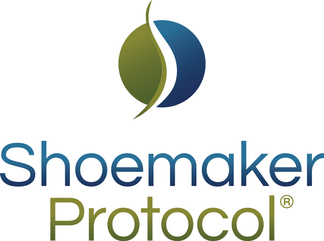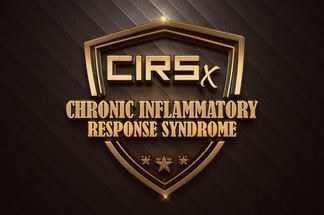Shoemaker Protocol™ Quick Start:

One of the most common questions we hear is, “how do I know if I have mold illness?” Rest assured, if you’re asking this question, you’ve come to the right place.
For over 4 decades, the Shoemaker Protocol™ has been supporting even the toughest cases of CIRS to recovery. And it remains the only published, peer-reviewed, and proven method to effectively diagnose and treat CIRS.
Diagnosing CIRS/Mold toxicity is not a one and done step or test because the illness presents with multiple systems through multiple body systems.
It presents in many ways, often with some kind of pain or inflammation, in almost any area of the body. Although there are several common symptoms, the illness expresses differently in each individual affected.
The symptoms are often misdiagnosed or remain a mystery. The medical world is still largely uninformed when it comes to multi-system inflammatory illnesses such as CIRS, so the symptoms are often misdiagnosed, and each symptom may be diagnosed as a single issue. The root cause often goes unanswered.
If you’re experiencing multiple chronic symptoms without a solution, you may be in the right place. First, it may help to understand how CIRS/mold illness and the Shoemaker Protocol™ work.
The diagnosis of CIRS relies on specific criteria:
1/ History of exposure to a water damaged building
2/ A collection of specific symptoms that affect multiple body systems
3/ Specific lab abnormalities
4/ Specific physical exam findings
5/ Improvement in symptoms and labs with specific step-by-step treatment
The Shoemaker Protocol™ is strategically designed to work through each symptom and system through the 11-step Protocol, tailored to the individual’s needs.
If you suspect the moldy environment of a water damaged building is affecting you, get started now with the Shoemaker Protocol™ diagnostic path.
The Shoemaker Protocol™ Quick Start Diagnosis:
1/ Check your symptoms with our quick reference symptom checker below.
You can get started right now by checking your symptoms with the overview list of the most common mold illness symptoms below.
If you are experiencing several of the following symptoms, you could be suffering from mold illness.
Common signs and symptoms often found in CIRS patients due to mold-induced toxicity:
• Brain Function: Executive cognitive abnormalities, “brain fog.”
• CIRS/SIRS: Chronic Inflammatory Response Syndrome, Systemic Inflammatory Response Syndrome.
• Digestive system: Metallic taste in mouth, nausea, vomiting, bloating, abdominal pain, diarrhea, excessive thirst, bile acid reflux.
• Eyes: Blurred vision, eye irritation, itchy eyes, red eyes, light sensitivity, tearing
• Energy: Chronic Fatigue is common.
• Hormonal Imbalances
• Immune system: Fortunately, the data collected by Dr. Shoemaker and his colleagues have identified specific immune abnormalities, especially, those identified by GENIE testing that help us tailor the program to your physiologic condition.
• Mental state: Anxiety, depression, irritability, mood swings
• Muscles and skeleton: Aches, muscle pain, joint pain, morning stiffness, weakness, lightning bolt pain and sharp piercing localized pain as in the eye.
• Nervous system: Headaches, static shock, dizziness, poor balance and coordination, vertigo, seizure-like events, tremors, numbness, tingling, skin sensitivity to light touch, temperature regulation problems.
• Respiratory system: Cough, sore throat, runny nose, sneezing, sinus problems, chronic sinus congestion, new-onset or worsening asthma, shortness of breath, chest tightness.
• Scent sensitivity: Scent sensitivity, chemical sensitivity, still does not have a definition agreed to by authors consistently. With GENIE we can identify the physiology of the source of unpleasant symptoms upon exposure to fragrances, chemicals and other odors.
• Skin: Rashes, dryness, irritation, sensitivity
• Sleep: Insomnia, frequent waking during sleep, night sweats •Urinary system: Increased urination, urgency
• Weight: Appetite swings, weight gain or weight-loss resistance
• Children: Chronic ear, throat and upper respiratory infections, asthma.
This list is a general overview of the most common mold sickness symptoms, but it’s by no means exhaustive. Also keep in mind that any of these symptoms could also be due to reasons other than mold toxicity and CIRS. So, while the symptoms themselves aren’t conclusive, they are a good start. The specific effects depend on your body’s unique vulnerabilities.
2/ Check your surroundings, determine if a water-damaged building is the culprit.
Mold and environmental biotoxins aren’t always obvious or visible. If you don’t see or smell mold but you highly suspect it based on health symptoms, it’s time to do some sleuthing and do your best to track down the mold at its source.
The first place to start is your home. Has there been any known water intrusions? Is there a leaky basement, ceiling, or windows? Maybe you’ve had some flooding. Start with checking those areas for signs of mold.
Sometimes the mold is hidden deeper and we don’t see or smell it. If it’s not yet obvious, you may need to do your own home inspection.
Look around every room in your house, especially looking at the ceilings and walls. Check under and around every sink, toilet and tub/shower for any water damage or rust. Look for any water stains or signs of damage. Check behind big pieces of furniture that don’t move often. Check your basement and the sump pump, water heater, and basement sinks. Pay attention to odors. Thoroughly inspect basements and crawl spaces. The “musty smell,” thought to be specific for mold problems, is actually due to actinomycetes. If it smells bad, it probably is bad.
Think back to any past water intrusions no matter how small and be sure to carefully inspect those areas. Other potential signs of mold to look for are: buckled baseboards, mold growing around window frames, or brown rings around pot lights. Or is there mold in the grout in your shower? Check front-loading washing machines for must smells. Air conditioning systems can harbor mold. Do you have a food composter in your kitchen? Mold can grow there. There is a lot of information online to help you do a thorough visual inspection.
Test your home or suspected buildings affecting you with the ERMI and/or HERTSMI-2 dust sampling tests to confirm mold toxicity.
Before you attempt any clean up, be sure to be informed. You’ll want to take precautions and start at the source, and even consider hiring professionals trained in cleaning mold –
specifically for those with CIRS.
Also, be sure to use mold-effective air filtration from a reputable company such as Air Oasis throughout the process and beyond. Air filtration is revolutionizing remediation, and also helps maintain the environment.
3/ Take the online Visual Contrast Sensitivity Screening (VCS) and check your symptoms for the probability of CIRS.
Relied upon by Shoemaker Protocol™ practitioners and health care professionals around the world, the Surviving Mold website features an invaluable testing and tracking tool, the online VCS test system.
If you find you have a few of the above symptoms or issues, and/or know you’ve been exposed to mold, the online VCS screening will give you feedback immediately. It correlates your symptoms and your vision contrast sensitivity to impairment due to CIRS.
The screening measures the neurological function of vision (contrast) that is deficient in those with mold illness. If you fail, the next step is to be evaluated by a Shoemaker Protocol Certified Physician for a possible biotoxin illness.
With the test, you’ll also receive:
• Printable results for your physician, including a symptom profile.
• Results can be emailed to your physician upon request.
• If needed, the VCS screening will help track your results over time.
• Receive a 30-day follow up email.
The VCS Test takes approximately 15 minutes, asks key questions, and guides you step-by-step through the process (cost is approx. $15/test). TAKE THE ONLINE VCS SCREENING NOW
The computer version of the VCS test is a screening test, and while it is a viable indicator, it does not in itself confirm diagnoses of any condition. Formal diagnosis of this multi-symptom chronic condition requires further testing and confirmation. The next steps and information here will help guide you through.
If you receive a fail on the VCS, we highly recommend finding a Shoemaker Protocol™ Certified Practitioner to assist you through the testing, labs, and 11 recovery steps.
When the prior steps are completed and you find you have a symptom profile, a positive VCS test, and signs of mold in your home or work environment, go on to do formal mold exposure testing with a Shoemaker practitioner.
The Shoemaker Practitioners, plus resources available on the SM website, will guide the formal testing process, including having your laboratory studies done, GENIE gene testing, and a NeuroQuant Screening.
By also using the proteomics or lab tests in combination with transcriptomics GENIE, you will have a complete roster of physiology enabling you and your health care provider to define exactly what is wrong with you, and thus, treat your case accordingly.
CIRS is a multi-symptom, multi-system disease, and all aspects of testing need to be performed in order to reach conclusive results, and then start the tiered treatment approach to make sure all your body’s unique variables and conditions are treated as needed.
To find a certified practitioner, check the resources on the SM site as Dr. Shoemaker has trained hundreds of physicians and practitioners in the Shoemaker Protocol™. If you can’t find one in your immediate area, it is possible to work with someone through video conferencing. Many people travel for some of their visits as they establish care.
Find a way to work with someone who is versed in the Shoemaker Protocol to be on your care team. If you can’t find a Protocol Certified Practitioner within traveling distance, our Physician Resources can help you and your attending physician manage the testing process and follow up requirements.
Many of the Shoemaker Proficiency Partners are also able to prescribe, and some serve as advocates and facilitators to help you manage your case along with your attending physician.
When you begin the process, our certified physicians will perform an in-depth intake to get your complete, multi-faceted profile, and a series of tests and labs will be run, including the Shoemaker panel (what we call cytokine testing). The process also uses ground-breaking transcriptomic testing for definitive diagnosis.
To learn more about CIRS/mold illness and the Shoemaker Protocol™ download Surviving Mold’s free guide, “Got Mold?” now
Featured Resources for Community
The Surviving Mold Gift List
Give the precious gift of CIRS health & support with 10 gifts that keep on giving.
AirOasis The #1 CIRS Spring Cleaning Hack
Specialized air purifiers are revolutionizing deep cleaning, no matter the season. They’re a game changer for remediation purposes, too.
CIRS Spring Cleaning Checklist
Living with CIRS means cleaning and maintenance efforts must be ongoing and up to CIRS-safe standards. Spring is a perfect time to do a thorough examination and cleaning of the entire home and create a schedule for the year ahead.
CIRSX Annual Conference June 5-8, 2025 in Tempe, Arizona!
Early Bird Discount ends March 7!
NEW EPISODE! Dr. Shoemaker on Episode #211 of the BetterHealthGuy Podcast!
New Episode! Dr. Shoemaker joins Scott on the BetterHealthGuy.com podcast to talk about the use of GENIE testing in Chronic Inflammatory Response Syndrome.
Related Resources for Community
- Thriving Tips for Travel, the Holidays, and Always
- CIRS House Hunting Guide
- Certified Practitioner Paula Vetter Presents: "Mold Illness: Surviving and Thriving - A Recovery Manual for Patients and Families Impacted by CIRS"
- 06172014 Structural Brain Abnormalities in Patients with Inflamatory Illness acquired Following Exposure to Water Damaged Buildings A Volumetric MRI Study Using Neuroquant
- 02272013 VIP Corrects CIRS Acquired Following Exposure to Water-Damaged Buildings
- 08152015 Transcriptomic Signatures in Whole Blood of Patients Who Acquire CIRS Following an Exposure to the Marine Toxin Ciguatoxin.
- Surviving Mold Podcast -Episode 1 with Dr. Karen Johnson
- State of the Art Conference of CIRS-2 planning is picking up steam!
- My Name Is Erik Johnson
- FAQ Video #4: Exercises and Capillary Hypoperfusion




